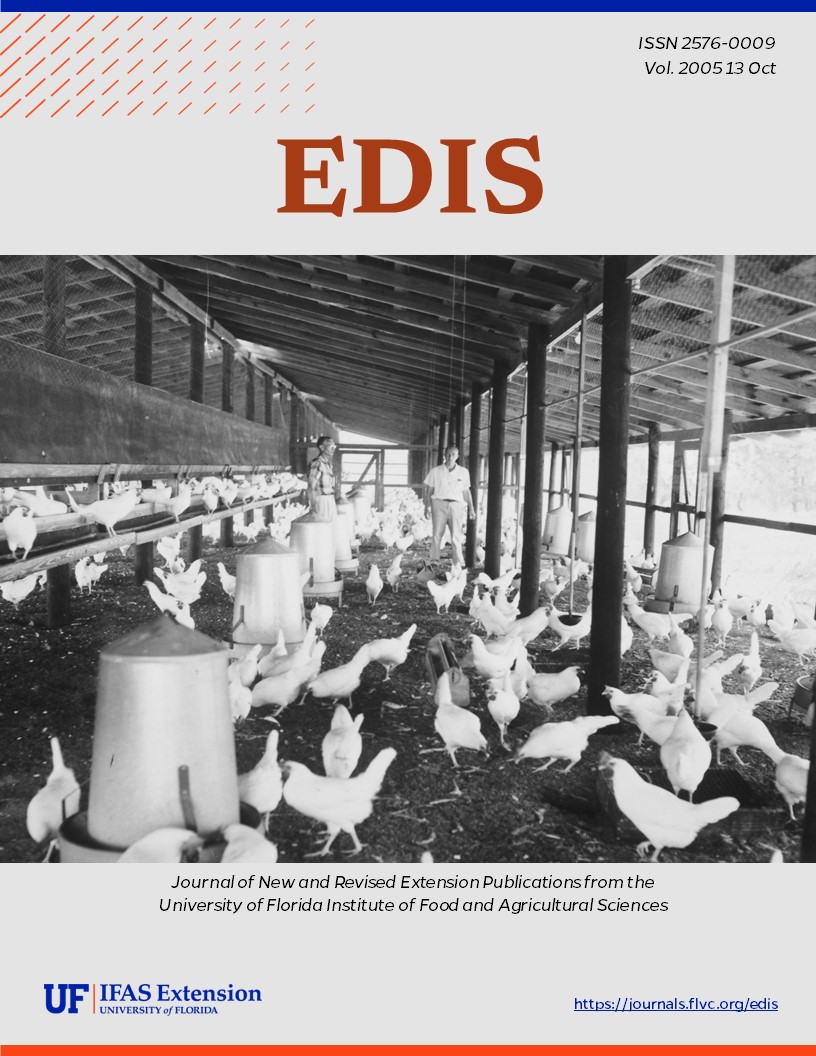Abstract
The predatory mite Neoseiulus californicus (McGregor) has characteristics of both type II specialist predatory mites and type III generalist predatory mites. N. californicus prefers Tetranychid mites as food, but will also consume other mite species, small insects, such as thrips, and even pollen when the primary prey is unavailable. N. californicus is often used to control the twospotted spider mite, Tetranychus urticae Koch, and other phytophagous mites on various crops in temperate and subtropical regions around the world. This document is EENY-359, one of a series of the Entomology and Nematology Department, UF/IFAS Extension. Original publication date November 2005.
References
Barber A, Campbell CAM, Crane H, Lilley R, Tregidga E. 2003. Biocontrol of two-spotted spider mite Tetranychus urticae on dwarf hops by the phytoseiid mites Phytoseiulus persimilis and Neoseiulus californicus. Biocontrol Science and Technology 13: 275-284., https://doi.org/10.1080/0958315031000110300
Castagnoli M, Simoni S. 2003. Neoseiulus californicus (McGregor) (Acari Phytoseiidae): survey of biological and behavioral traits of a versatile predator. Redia 86: 153-164.
Castagnoli M, Liguori M. 1991. Laboratory observations on duration of copulation and egg production of three Phytoseiid species fed on pollen. In: The Acari. Chapman and Hall, New York, NY. 231-239. https://doi.org/10.1007/978-94-011-3102-5_15
Croft BA, Monetti LN, Pratt PD. 1998. Comparative life histories and predation types: are Neoseiulus californicus and N. fallacies (Acari: Phytoseiidae) similar type II selective predators of spider mites. Environmental Entomology 27: 531-538. https://doi.org/10.1093/ee/27.3.531
Easterbrook MA, Fitzgerald JD, Solomon MG. 2001. Biological control of strawberry tarsonemid mite Phytonemus pallidus and two-spotted spider mite Tetranychus urticae on strawberry in the UK using species of Neoseiulus (Amblyseius) (Acari: Phytoseiidae). Experimental & Applied Acarology 25: 25-36.
Gerson U, Smiley RL, Ochoa R. 2003. Mites (Acari) for pest control. Blackwell Publishing. Ames, IA. 556p. https://doi.org/10.1002/9780470750995
Greco NM, Liljesthrom GG, Sanchez NE. 1999. Spatial distribution and coincidence of Neoseiulus californicus and Tetranychus urticae (Acari: Phytoseiidae, Tetranychidae) on strawberry. Experimental and Applied Acarology 23: 567-580.
Hoddle MS, Aponte O, Kerguelen V, Heraty J. 1999. Biological control of Oligonychus perseae (Acari: Tetranychidae) on avocado: evaluating release timing, recovery, and efficacy of six commercially available phytoseiids. International Journal of Acarology 25: 211-219. https://doi.org/10.1080/01647959908684155
Johnson WT, Lyon HH. 1991. Insects that feed on trees and shrubs. 2nd edition. Comstock Publishing Associates. 560p.
Krantz GW. 1978. A manual of acarology. Corvallis. Oregon State University, OR. 509p.
Liburd OE, Seferina GG, Dinkins DA. 2003. Suppression of twospotted spider mites. In: UF/IFAS Berry/Vegetable Times. November 2003.
Ma W-L, Laing JE. Biology, potential for increase and prey consumption of Amblyseius chilenesis (Dosse) (Acarina: Phytoseiidae). Entomophaga 18: 47-60. https://doi.org/10.1007/BF02373013
McMurtry JA, Croft BA. 1997. Life-styles of Phytoseiid mites and their roles in biological control. Annual Review of Entomology 42: 291-321. https://doi.org/10.1146/annurev.ento.42.1.291
Oatman, ER, McMurtry JA, Gilstrap FE, Voth V. 1977. Effect of releases of Amblyseius californicus on the twospotted spider mite on strawberry in Southern California. Journal of Economic Entomology 70: 638-640. https://doi.org/10.1093/jee/70.5.638
Rondon SI, Price JF, Liburd OE, Francis R, Cantliff DJ. (2004). Neoseiulus californicus (McGregor). A predatory mite species for controlling twospotted spider mites in strawberries. EDIS. http://edis.ifas.ufl.edu/HS245 (31 October 2005). https://doi.org/10.32473/edis-hs245-2004

